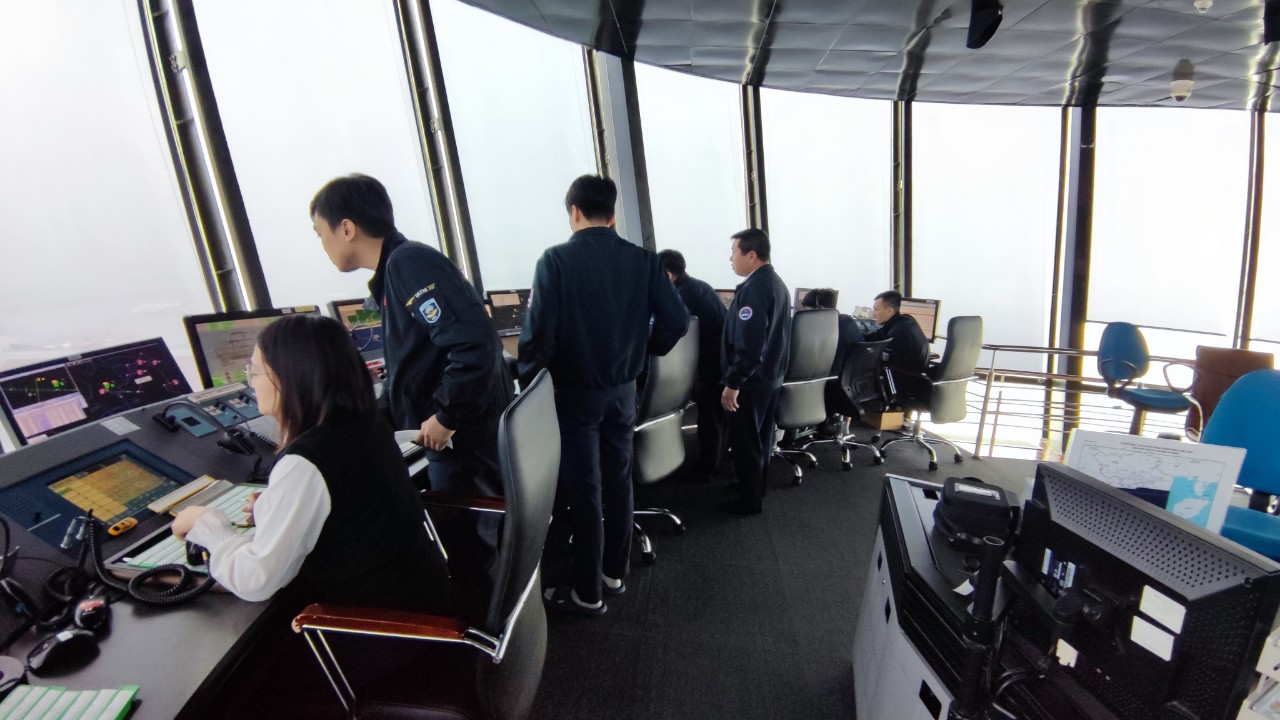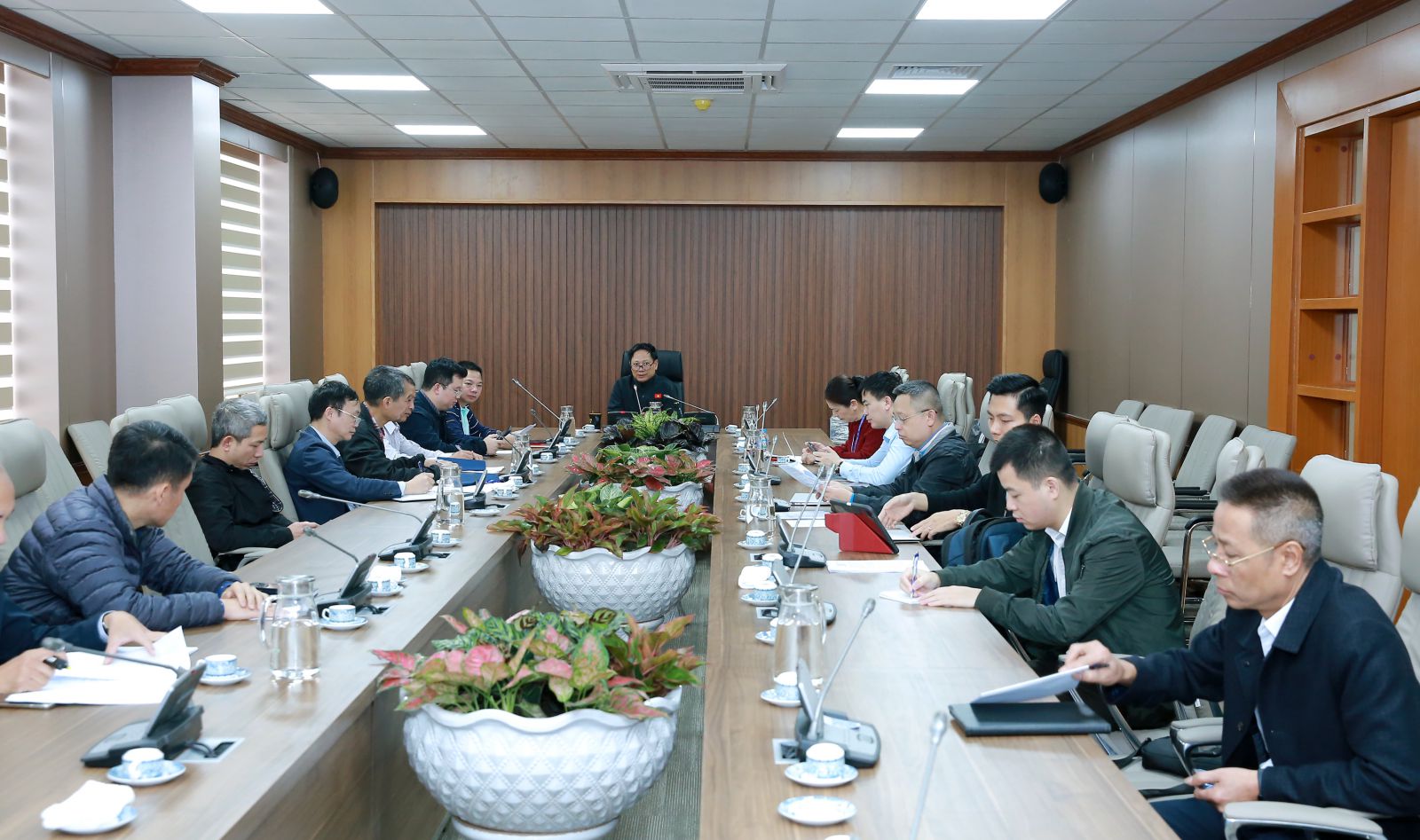Rare dense fog phenomenon at Noi Bai Airport
In the early days of February 2024, foggy and low-cloud phenomena are occurring at airports in the Northern region, causing reduced visibility below flight operational standards and negatively affecting flight operations.
Especially at Noi Bai Airport (Hanoi), horizontal visibility has dropped to less than 300 meters at some point, according to statistics from the meteorological agency. This case has only occurred 3 times within the past 10 years.

Noi Bai Airport at 6:41 am on February 2, 2024. Photo: VATM
Fog is a weather phenomenon that occurs when near-surface air temperature approaches the dew point temperature, causing water vapor to condense into tiny water droplets or ice crystals. This condensation reduces visibility and can create potential hazardous conditions, especially for airport operations.
Extreme weather phenomena such as thunderstorms and fog often have complex and sudden changes, causing many difficulties in forecasting. Especially in the context of global climate change, the occurrence of prolonged extreme weather events is an unpredictable factor that significantly affects human activities.
To ensure the safety of flights and minimize congestion at Northern airports when fog occurs, the Vietnam Air Traffic Management Corporation (VATM) has implemented synchronized measures in weather forecasting, air traffic flow management, and flight operations.

Flight operations control team at Noi Bai Tower on February 2, 2024. Photo: VATM
On the night of January 31, VATM applied the Low Visibility Procedures (LVP) at Noi Bai Airport. This operational method aims to ensure safety, regulation, and efficiency for all flight activities at Noi Bai Airport when visibility is reduced below normal operational standards.
Under the LVP, flights are designated to use the ILS CAT II precise approach method for takeoff and landing on runway 11R. To implement this method, air traffic controllers and pilots must meet technical requirements for equipment and have high qualifications approved by the Civil Aviation Authority of Vietnam.
Minimizing negative impacts on flight operations
In addition to the LVP, VATM also instructed its affiliated units to implement Flow Management Procedures in unfavorable weather conditions. This is one of the air traffic flow management measures to balance flight operation demand and airport capacity when adverse weather conditions occur.
The implementation of flow management procedures requires the participation of many units within and outside VATM to coordinate decision-making (CDM) such as: Northern Air Traffic Management Company, Central Air Traffic Management Company, Southern Air Traffic Management Company, Air Traffic Flow Management Center, Meteorological & Hydrological Forecasting Center, Aviation News Information Center, TCVN’s Airport Operations Control Centers, airline operation control centers, Northern Civil Aviation Authority, Southern Civil Aviation Authority, and more.
In addition to applying flight operation methods and flow management measures, VATM actively collaborates with the National Hydro-Meteorological Forecasting Center to study, discuss and strengthen the effectiveness of weather forecasting activities, especially during the times when extreme weather phenomena commonly occur and affect flight operations.

Deputy General Director Nguyen Dinh Cong presiding over a meeting to enhance safety in flight operations in unfavorable weather conditions and during Tet holiday on February 4, 2024. Photo: VATM
On February 4, VATM organized a meeting presided over by Deputy General Director Nguyen Dinh Cong to assess and propose measures to enhance safety, regulation, and efficiency in flight operations in unfavorable weather conditions.
The meeting took place at VATM headquarters, with online connections nationwide and the participation of representatives from the Civil Aviation Authority of Vietnam, the National Hydro-Meteorological Forecasting Center, and all VATM agencies and units.
In the coming time, VATM will continue to research and collaborate with relevant agencies and units to improve service quality, actively prevent, restrict, and minimize the negative impacts of weather changes on flight operations.












